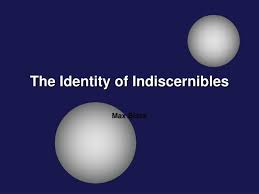
Leibniz was an extremely influential and strange character that brought the human race calculus. He formulated that our universe consisted of matter that never interacted with each other but only unfolded like a story in a book and that all ideas we learn and comprehend over our lifetimes already existed inside of us innately. He may have hinted at an unconscious side of the mind that wouldn’t become popular for another 100 years and caused Isaac Newton to be shunned by his own countries government. One of Leibniz most famous contributions is the Leibniz law which states that object a and an object b are identical if and only if a and b have all of the same properties. This principle seems logically acceptable at prima facie, but it actually is a pretty disputed principle when you break it down into its bi-conditional statements.
Since the law contains the wording “If and only if” you must conclude that it is a bi-conditional statement meaning it is composed to two distinct principles. The first is called the Indiscernibility of identicals and it states that if x and y are identical, than any property x has, y also has and vice versa. This principle is pretty well accepted by most philosophers today and is not very often disputed. It is the other part of the law where the trouble begins, it is called the Identity of Indiscernibles and it basically states that if for any property x has, y has, than x is identical to y. It at first glance seems both almost the same as the first principle and logically correct, but with more scrutiny it becomes clear these are fundamentally different in their nature. To explains the difference let me use the example of Clark Kent and Superman. According to the Indiscernibility of identicals, if Superman and Clark Kent are identical, than if Superman can fly, Clark Kent can fly as well since they are not two separate beings but one in the same. An example of the Identity of Indiscernibles on the other hand would be that assume you notice that Clark Kent has a low voice and Superman also has a low voice. Also you notice that Kent has size 9 feet and Superman has size 9 feet as well etc. until you come to understand that every characteristic of these two is exactly the same, you then must make the conclusion that Kent and Superman are the same thing. The principle claims that no two objects can have all the same qualities as each other and remain two separate objects, but instead must be the same object so we must logically conclude from the example that it is impossible for Kent and Superman to have all the same qualities and yet be different beings. This is where the principle gets murky. A philosopher by the name of Max Black argued against this principle with the example of a universe that consists only of two perfectly identical spheres. These spheres are both made of pure gold with the same diameters and distance from each other in a perfectly symmetrical universe. Although it seems we can definitely imagine such a universe as logically existing, it would violate the principle of Identity of Indiscernibles since two identical objects can’t simultaneously exist at the same time. So we must choose between the two identical spheres as being impossible or the Identity of Indiscernibles principle as being false.
Leibniz would conclude that the two identical spheres universe is impossible and defends the Identity of Indiscernible principle by a means of proving that God always acts with reason. Leibniz believes that morality and goodness must exist outside of God, because if it did not, God would be arbitrary in everything he does since everything he does would logically be good. Leibniz states “For why praise him for what he has done if he would be equally praiseworthy in doing the exact contrary?” He cites the book of Genesis here claiming that it would have been redundant for God to claim his creation good unless goodness could exists separate from his actions and being. So since goodness exists outside of God, and God is always good, than God must always use reason to act or create in a way that produces the best possible scenario. The final result of all this is that God never acts arbitrarily but always for a reason and according to this conclusion, no two identical things could ever exist at the same time since what God did with them would be arbitrary since they are interchangeable. If you re-examine Leibniz conclusion with the two spheres argument, you find that this universe is impossible because it forces God to act in an arbitrary manner. Which one he creates first, where they are placed, or what each sphere is used for is all arbitrary action since they are interchangeable with no consequences at all the universal plan that God choose to be the most good.
It seems deeply frustrating to take the Identity of Indiscernables seriously because intuitively it seems that, much like the two spheres example, you can imagine two identical objects existing apart from each. A final thought on this topic is that orthodox quantum mechanics tells us that the state of a system of n particles of the same kind is one in which we can’t distinguish one particle from the other. These particles are so indistinguishable that they could possibly be assumed as being identical. This of course is just one way of interpreting the theory, but none the less is a possible counter to the identity of indiscernibles.
Leibniz. Discource on Metaphysics and Other Essays. Pg. 2 http://www.science.uva.nl/~seop/archives/fall2004/entries/identity-indiscernible/